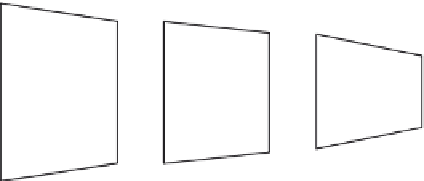Environmental Engineering Reference
In-Depth Information
support policy decisions by translating policies to scenarios which can be analyzed
through this tool. In terms of evaluation three major components of SEAMLESS-IF
can be distinguished:
-
IA procedures;
-
Quantitative tools (database, numerical models and indicators);
-
And user interface of the computer system.
Two main procedures are part of SEAMLESS. The first deals with how SEAMLESS-IF
may be used in impact assessments. The second is more concerned with the
assessment of the institutional compatibility of proposed policies. The framework
is built upon various types of quantitative tools. SEAMLESS-IF includes several
databases that not only provide inputs for the model but also have stand-alone value
in providing a single point of access to datasets at different levels and in different
domains. Reflecting the aim of IA there are models from different domains and
ranging from field to global market level which are linked to each other, using a
modular software to keep the framework open for further developments. Indicators
are the third group of quantitative tools which aim to integrate results from the
various models in a set of variables relevant to assessing the sustainability impact
of policies. Being designed as a computer-based tool there is an important role for
the user interface in bringing together the different components, while allowing for
assessment of a wide range of potential policy questions with SEAMLESS-IF.
In evaluating SEAMLESS-IF, we thus deal with a mixed bag of components
requiring an evaluation methodology that is both flexible and practical (i.e. aimed
at getting the system operational for the policy support for which it is designed).
In order to influence the design of SEAMLESS-IF, this evaluation took place
throughout the project, with evaluation methods reflecting the development of the
framework over time (Fig.
10.1
).
Following different authors (Boehm
1988
; Mosqueira-Rey and Moret-Bonillo
2000
; Sojda
2007)
the participatory development strategy of SEAMLESS-IF was
Link all
components of
framework
Integrated
framework
Integrate
components
in framework
Design
structure of
framework
Individual
components
Conceptual
evaluation
Technical
evaluation
System
evaluation
Fig. 10.1
Three types of evaluation corresponding to development phases of an integrated
framework








